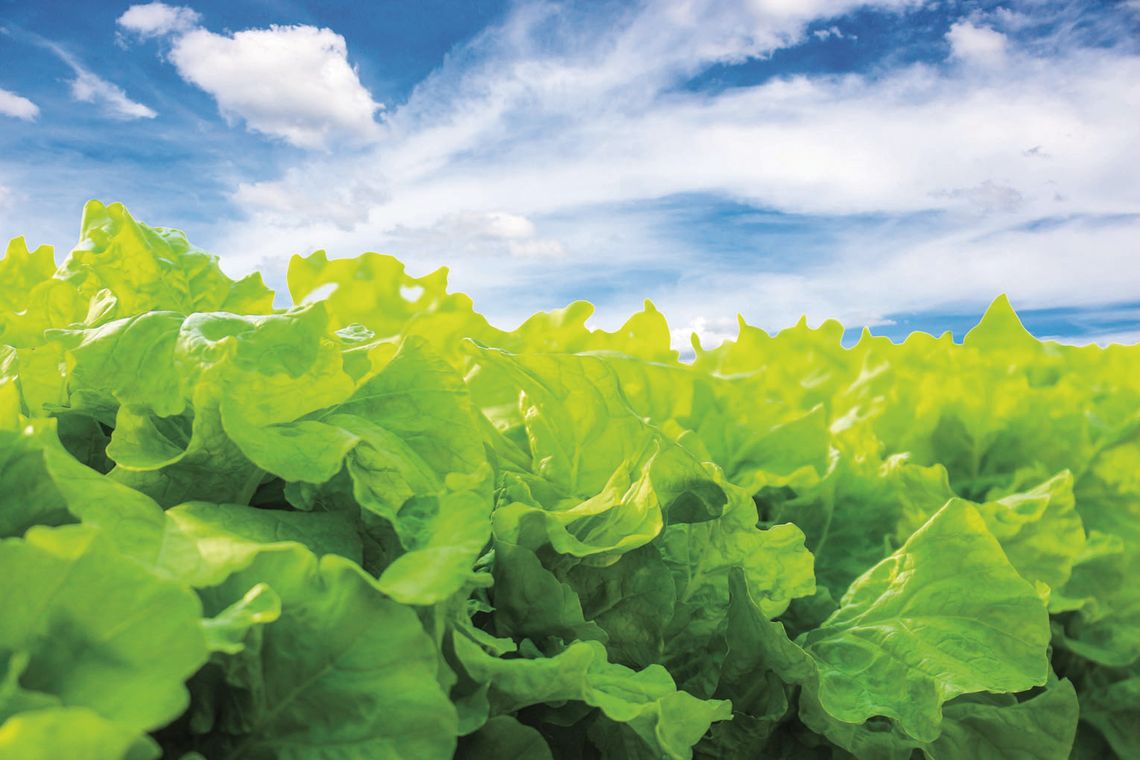PLOW AND HOSE ORGANIC GARDENING IN CENTRAL TEXAS | Julie Rydell
Cool season crops like spinach and lettuce are both nutritious and fun to grow. Both will continuously produce through the fall, winter and into the spring. They thrive in welldraining soil, preferably sandy loam.
Lettuces have shallow root systems so their roots don’t compete as much with other plants and can be inter-planted between rows or tucked into small spaces. Lettuces actually look nice when planted with flowers in containers. There are so many different types of lettuces and some are really ornamental as well as edible.
Spinach plants have a more extensive root system, but they have one primary tap root, and their roots can grow much deeper. If a spinach is happy where it’s planted, it can develop a 5’ long tap root therefore less likely to compete with shallow rooted plants for nutrients and water.
Lettuce and spinach can be started from seeds or transplanted now through early March. Transplants let you get a jumpstart on your lettuce, but there is an amazing variety of heirloom and hybrid seeds available that are fun to try.
If you decide to put in some transplants, let them get established a week or two after planting before harvesting leaves. This will allow the roots to adjust to their new location and start putting on new growth.
There are four basic types of lettuces--crisphead, butterhead, leaf & romaine.
Romaine lettuces are long leaf varieties that are sturdy and have firm ribs in the middle of each leaf. These tend to be the most heat tolerant, which may not be so important this time of year, but something to keep in mind in late winter if you want to plant lettuce for a spring harvest.
Iceberg lettuce is the most well-known crisphead lettuce, which are crunchy with a neutral, bland flavor. They have a nice water content and cell structure, and they can handle a heavier salad dressing, like ranch and blue cheese, very well. Crisphead lettuces aren’t as nutritious as some of the darker lettuces.
Loose leaf lettuces have large, ruffled leaves that need a little more space to grow than their more compact growing cousins. They are mild and tender and sometimes sweet. Because of their open and loose growing habit, loose leaflettuces can look messier in the garden, but there is an incredible variety of shapes and colors that add beauty and texture to your garden during the winter when not a lot is growing.
Butterhead lettuces are more delicate. They have soft, smooth leaves and often used for lettuce wraps. They have small, round heads with lots of loose leaves. Boston and bibb lettuces are butterheads. Look for buttercrunch. It’s a nice butterhead variety that grows well in Central Texas and is easy to find transplants.
There are many heirloom butterhead lettuces-they come in all shades of green and there are red and speckled varieties as well. They stay soft and mild through the growing season but can turn bitter at the end of their growing season when they start to bolt.
But now that its fall, we don’t to have to worry about the lettuce flowering and setting seed until late Spring.
And with just a few plants you can have fresh lettuce from fall to late spring. If you enjoy baby greens, use the “Cut and Come Again” method to individually clip the outside leaves of your lettuce plant but leave the center crown to grow and form new leaves. As long as you leave the center core alone, it will continue to get to grow. Or leave them to grow to the size you want. Loose leaf lettuces leaves can grow 12 inches long. The larger you let your lettuce get, the more crunch they will have so keep them watered The butterhead lettuces can be grown as a full head of lettuce. Instead of taking individual leaves from the outside, let it grow until it about the size of a small plate and then pull it up or cut it off at the base. If you harvest the full head, it’s not going to grow back. If you stagger your planting over a couple of weeks, you can grow and harvest full heads over the course of the growing season.





